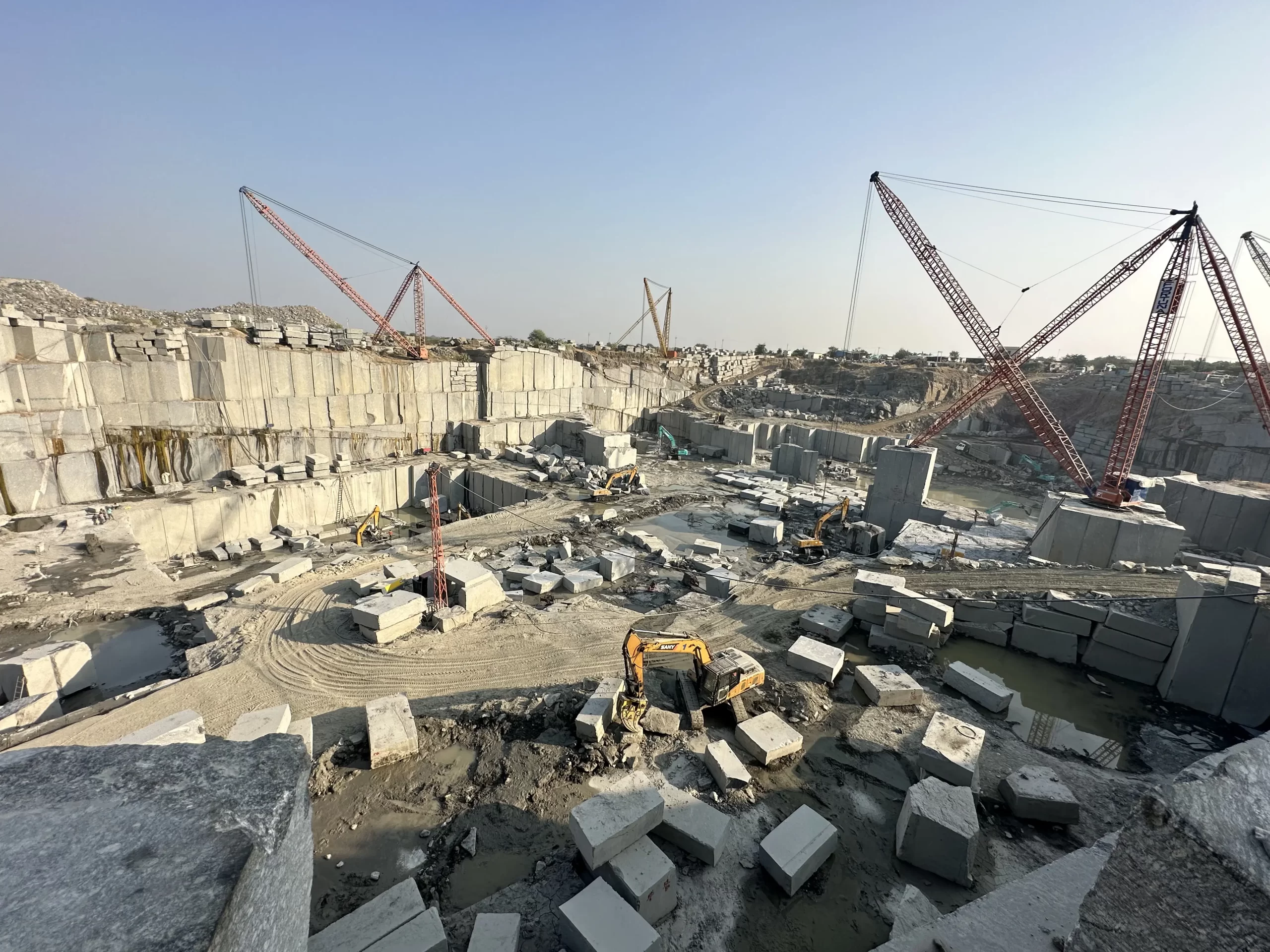Unearthing the Rich Background and Sustainable Practices of Granite Quarrying
As we base on the precipice of uncovering the complex tapestry of granite quarrying, a journey with time discloses not just the physical act of drawing out stone however likewise the social and historic importance woven into the extremely textile of this practice. From the ancient origins that laid the structure for modern quarrying strategies to the sustainable methods that are shaping the future of this sector, each sculpt mark on granite surface areas tells a story waiting to be uncovered (granite quarries in south africa). The heritage of granite quarrying stretches far past mere extraction; it is a testament to human resourcefulness, strength, and the enduring attraction of this magnificent stone
Old Origins of Granite Quarrying
Dating back to ancient people, the technique of quarrying granite has been an essential part of human background and architectural development. The earliest evidence of granite quarrying go back to old Egypt, where large pyramids and complex sculptures were crafted from this resilient rock. The Egyptians used primitive tools to remove granite blocks from quarries, showcasing the value of this product in their monumental constructions.
Progressing in history, the Greeks additionally made considerable payments to the quarrying of granite. The Greeks made use of granite in different architectural wonders, such as holy places and statuaries, showing their skill in shaping and sculpting this hardy stone. The Romans further improved the strategies of quarrying granite, utilizing advanced tools like blades and hammers to essence and form granite for their legendary structures.
With the centuries, the method of quarrying granite has actually developed, with modern technologies boosting effectiveness while preserving the ageless charm of this natural rock - granite quarries in south africa. From ancient human beings to contemporary builders, the heritage of granite quarrying continues to form our globe
Evolution of Quarrying Techniques
The evolution of quarrying strategies has actually been marked by a continuous development towards higher effectiveness and precision in extracting granite. From the simple methods utilized by our forefathers to the advanced technologies used in modern quarrying operations, the sector has actually undertaken substantial improvements. Early quarrying techniques involved manual work with standard devices such as blades, hammers, and wedges to remove granite blocks from the earth. As civilizations progressed, techniques like fire-setting and primitive explosives were presented to assist in the removal process.
Developments in computer-controlled devices and 3D modeling have enhanced quarrying operations, leading to minimal ecological influence and boosted sustainability techniques. As the need for granite proceeds to increase, the advancement of quarrying strategies continues to be important to conference industry needs effectively and sustainably.
Cultural Relevance of Granite
Granite holds an extensive cultural significance throughout different civilizations because of its enduring visibility in building work of arts and prized monoliths. From the magnificent pyramids of Egypt to the complex makings of the Angkor Wat holy place in Cambodia, granite has been a product of option for sharing splendour and durability in social heritage. In ancient Rome, granite columns embellished temples and public buildings, representing strength and permanence. The cultural relevance of granite here expands beyond its physical features; it embodies resilience, security, and eternity, making it a symbol of withstanding heritages and customs.

Lasting Practices in Quarrying
Among the rich history of granite quarrying and its cultural relevance exists a growing focus on sustainable methods within the industry. As ecological understanding and worries concerning resource exhaustion have actually enhanced globally, the quarrying industry has progressively embraced lasting techniques to lessen its influence on the environment and surrounding areas.

In addition, recovery and rehab of quarry websites post-extraction are try this integral to sustainable methods. By recovering quarried areas to a natural or valuable state, such as developing wildlife environments or recreational rooms, quarriers can balance out the environmental footprint of their operations and contribute positively to the local community.
Legacy of Granite Quarrying
With a historic backdrop soaked in craftsmanship and industrial progress, what sustaining impact has granite quarrying left on the landscape of modern-day society? The tradition of granite quarrying transcends plain extraction methods; it has actually shaped architectural wonders, city landscapes, and social heritage worldwide. The resilient nature of granite has made it a preferred choice for monoliths, structures, and framework, standing as a testimony to the ability and artistry of quarry workers across generations.
In addition, the financial footprint of granite quarrying can not be forgotten. The market remains to offer employment possibility and drive regional economic climates in regions where granite extraction is common. It has additionally stimulated technical developments in quarrying techniques and equipment, resulting in a lot more effective and sustainable methods.
In terms of sustainability, the tradition of granite quarrying consists of initiatives to reduce environmental impacts via reclamation jobs and accountable source administration. By balancing economic rate of interests with ecological stewardship, the sector aims to ensure that future generations can proceed to take advantage of this enduring natural deposit.
Verdict
